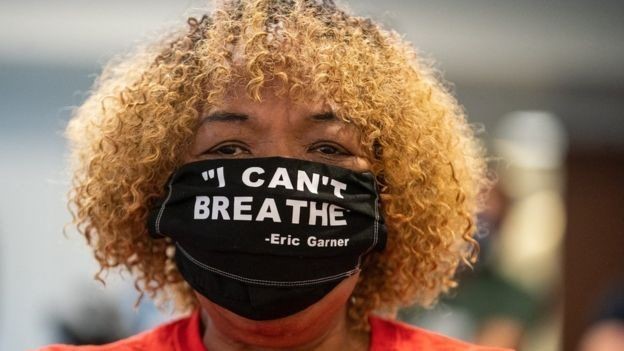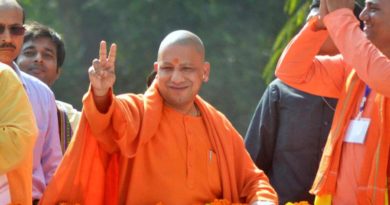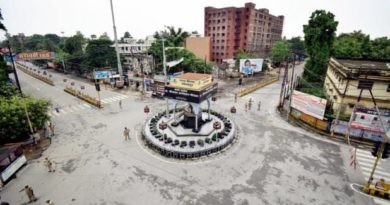How do Indians Treat Black People in America?
America is currently in a posture of protest.
This new phase of violence has started with the video in which a white policeman is seen crushing the neck of African American citizen George Floyd and killing him.
This video has angered many people and inspired many to raise their voice against injustice.
About 4.5 million people of Indian origin live in America. Many of these people have taken part in protests demanding reforms and changes in the police system.
But the generation that is born and brought up in the US is joining these protests.
Second-generation Indian-American American citizen Lisa Robinson says, “I don’t think my parents’ generation thinks much about George Floyd.”
“I think my generation, my nieces, my nephews and my sisters, see it as discrimination and believe it should be written against. They are enthusiastically opposing it.”
But these protests have given the community a chance to look within themselves.
A leader of the Indian American community tells me that “when it comes to racism with African Americans, we are probably more racist than white American citizens.”
He says, “I see this happening every day. For example, you will hear anyone saying that the people who came for delivery yesterday were Kallu. Or someone tells me that by seeing these people they will Lock the doors. “
Those who understand the history of caste discrimination in India can understand it better.
Racism against black people
Lisa Patel, the child of an immigrant Gujarati couple living in the United States, married Regi, an African-American man.
Lisa describes her experience as saying, “I think Indians living in the United States are racist towards black people. I think Indian Americans think they are better than black people. That’s what made them think that this cannot be done to them because they do not mess with the law. “
In America, it is quite rare that an Indian marries an African American.
A leader of the Indian American community says, “You will see Indians interacting with more whites. They talk to Chinese people more than African Americans.”
Lisa was married on 29 February 2000, but it was not easy for Lisa to do it.
Lisa, who grew up in a small town like Arkansas, says, “My family members behaved badly. They said,” Why have we come to America? We hadn’t come to America for this? If we knew this would happen, we would remain in India. “
Whites constitute 70 percent of the population in this southern central state. 15 percent of these people are African American citizens.
The initial years of Lisa’s marriage were difficult.
Lisa’s husband, Regi, says, “It was not easy for her (Lisa’s) family …. The conversation between us was closed … I took it not as racism but as a cultural change for which I found myself had to prepare. But all is well now. “
Lisa says that the two words she first taught her husband were ‘Kallu and Kariya’.
Pointing to the conversations in Indian-American neighbourhoods, Lisa says, “(I said) you don’t need to learn any more words. Kariya and Kallu. These words mean that they are associated with your blackness; talking about you and your children’s identity. “
Thank African Americans
The special thing is that Indians who reach America should be thankful to African Americans.
The Indian Community Center in California, supporting the Black Lives Matter movement, has published a newsletter reminding this aspect.
It states, “We owe it to the African American community. Most of the Indians were able to shift to the United States because the Immigration and Nationality Act was passed in 1965. This law was created because of the African American Civil Rights Movement.”
“This law finally ended the racist immigration ban and allowed residents of many countries to come to the United States for a better life. Not only that, the 1965 Voting Rights Act gave Asian American voters great protection. They were also black civilians. It was because of the rights movement. “
Education was the ticket due to which Indians could come to America at the initial level.
In the sixties and seventies, highly skilled Indians engaged in fast-growing research and development-related fields.
Then came another wave in the nineties and 2000s which included Indians who were masters of technology.
According to Neil Gonuguntla, a second-generation Indian American living in Delas, most of the first generation spent their attention and time in strengthening their roots in America and did not participate in politics. But, his generation thinks differently.
Neil says, “For us, this is our home. We want our country to treat everyone equally.”
What is going on in India?
At present, what is going on in America is also being compared to India. However, the people I have talked to, do not come to India very often.
Millionaire Republican Denny Gaekwad, who came to America from India about thirty years ago, says, “I like this; it bothers that WhatsApp messages are being shared against Muslims for the last seven years. “
He takes a critical view of the violence that has taken place during the ongoing protests in the United States. But, Danny disagrees with the shops being set on fire.
He disagrees with those who say “I am angry, in such a situation I am going to loot and set fire”.
“I get ten messages against Muslims every day. These messages are related to Corona. These happen that Muslims give birth to six children and more. I had never seen so many dirty messages. I have seen about 100 people sending a message to said that stop sending such messages or else I will block them. “
“Think on WhatsApp – it is being misinformed. I think millions of people will be working to create and spread these kinds of messages. This is politically motivated propaganda. There are at least one lakh People working. “
Victims of Violence
The protests in the US also remind us of all the painful moments, violent incidents and racist remarks that Indian Americans have faced on different occasions.
Anil Bansal, who is associated with the Federation of Indian Associations, says, “Racism is at the heart of our society. No matter how much one says that it is a society with free opinions. But it is quite ingrained. Even after so many years, so many laws have been made Even after that the separation remains. “
Bansal came to USA in 1977 at the age of 21 on scholarship from IIT, Kanpur. After this, Bansal also did his Masters and MBA from USA itself.
Bansal says, “I have been told many times to go home. You have to learn to ignore it all. Ignoring is a better way to neutralize aggression; because if you show aggression by getting angry at the same time, then this side, or there will be a loss of one of the parties. “
Bansal remembers The DotBusters, a New Jersey gang targeting Indian-Americans in the eighties.
This was the dot on the forehead used by Hindu women.
In 1987, the New York Times published the letter of Dot Busters Gang.
The letter wrote, “We will go to every level to drive Indians out of the city of Jersey.”
According to a journalist who covered the attacks of dot busters, this gang was like many other gangs because it was a period when the number of Indian Americans was increasing due to which other communities were unhappy.
An Indian American man Navroz Modi was killed. Another man Kushal Saran was beaten so badly that he remained in a coma for several days.
But in 2015, another incident came to the fore which shook the Indian Americans.
In this case, two policemen had dropped Sureshbhai Patel, 57, on the ground. Patel was partially crippled by this incident.
Patel’s son Chirag was asked if he participated in the protests for police reform.
But he refused to say anything about it.
Blonde Colour
Despite the protests, the discussion started in Indian American homes about skin colour moves towards the trend towards white colour.
Lisa, who has given birth to two children, says, “The attachment to the white colour is the same. It is the same in the African community. My children also have it. It is not like a sense of shame but they are aware of it. They say that Mommy, your colour is clearer to us. I think it does not make them feel ashamed right now. But the affection for colour is the same in America and in the African-American community. “
Born in the Indian city of Hyderabad, Radhika Kunel is contesting in the Legislative Assembly of Nevada Province.
She says, “I am a light coloured woman. I do not have a son. He is a dark boy. And he is tall. He has curly hair. I am worried for him. However, he is not black. But I worry about him. “
What to worry about
Radhika says that she thinks that something should happen to her.
She says, “He does not have African American features. But we take great care of what he wears and how he wears it. We don’t want to be a target for anything.”



